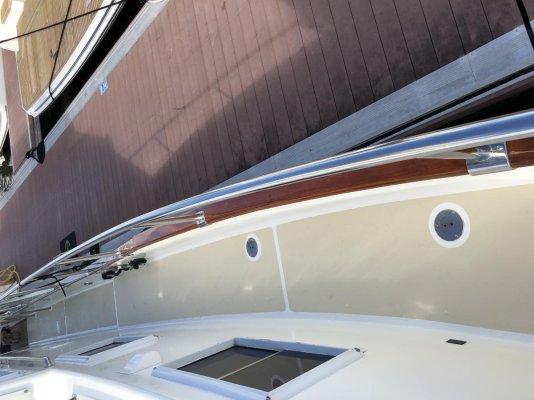Rondalw1
Senior Member
- Joined
- Feb 19, 2019
- Messages
- 111
- Location
- United States
- Vessel Name
- WIXHAUSEN
- Vessel Make
- Jefferson 42
Looking at a Trader (1982) that is being sold by original owner. It has Teak Decks and they all appear to be in great shape and all polished/shined.
Just wanting opinions on possible rot.
Thanks
Just wanting opinions on possible rot.
Thanks


